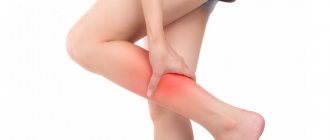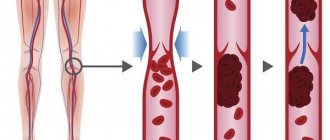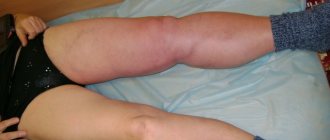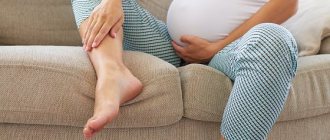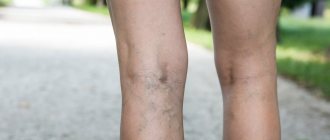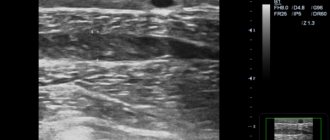Nutrition for thrombosis: general information
Patients, first of all, need to develop a new drinking regimen, in which the amount of liquid drunk (primarily water) should reach the established norm (1.5-2 l). Foods high in vitamins C and K should be removed from your daily diet.
Expert opinion
Treatment of thrombosis includes taking anticoagulants, in particular Warfarin. This drug involves following a strict diet that limits the amount of foods rich in vitamin K. First of all, green tea, spinach, lettuce, cabbage, and beef liver.
Vascular surgeon, phlebologist
Osipova Ekaterina Yakovlevna
Some healthy foods can only be eaten in limited quantities, since the vitamins in their composition not only have a beneficial effect and promote overall recovery, but also increase blood clotting, which is undesirable in this case. We are talking about lettuce leaves, rose hips, tomatoes, various types of cabbage, liver and other offal, currants. These foods should be limited in the diet until the risk of thrombosis is reduced.
Statistics on the localization of thrombotic lesions
Proper nutrition for thrombosis (Thrombosis) completely excludes smoked, salty, and sweet foods. The patient should consume more plant foods - vegetables, fruits, vegetable oils, legumes and grains. Many people are interested in whether it is possible to add vinegar to food, eat pepper and garlic, or hot horseradish, if the threat of disease is minimized? Doctors do not prohibit this food, but there is a taboo on alcoholic drinks and spicy foods.
The diet for thrombosis is based on a diet enriched with polyunsaturated fats, vitamin E and fiber. Preference should be given to steamed, stewed and boiled dishes. Products can also be sliced and baked. The amount of food of animal origin must be reduced.
What are the benefits of foods that are the main sources of fiber? Fresh vegetables and fruits improve the elasticity of the walls of blood vessels.
Nutrition for thrombosis: recommendations
Nutrition for vein thrombosis: what not to eat? First of all, you need to stop drinking coffee or alcohol regularly. Sausages, citrus fruits, baked goods, smoked meats, desserts, canned food, dairy products, and currants should disappear from the daily menu.
The deep vein thrombosis diet aims to reduce the consumption of foods that increase blood clotting rates. The patient must, on the contrary, strive to keep the blood liquid.
The diet is based on the consumption of lean meat, fresh vegetables and fruits. The foundation of the diet for vein thrombosis consists of products with Omega-3 and vitamin E.
!
Bakery products should be excluded from the diet.
Vitamin E prevents the breakdown of poly- and monounsaturated fats. It is taken in the form of capsules or tablets as part of a prescribed regimen. Vitamin E is also found in concentrated form in sunflower seeds, sesame and flax seeds, sprouted wheat sprouts, and avocados. Oils like flaxseed and olive are also useful, but only cold-pressed.
Saturated fats should be limited. If you have problems with blood vessels, you should eat chocolate (75% or more), lard, meat, high-fat hard cheeses, and butter. It will be difficult for the body to process these products compared to quickly digestible sugar, but this source of energy for the cell is much better.
Refined flour, sugar, carbonated drinks, sugary cereals and all other simple carbohydrates contribute to the accumulation of excess fat and fluctuations in blood glucose levels. The more sweets you eat, the more your blood viscosity increases, and this can lead to problems with blood clots.
Expert opinion
It is not recommended to abruptly stop eating foods that you ate before the onset of the disease. Instead, doctors recommend introducing new dietary rules gradually so that the body gets used to them and does not experience stress.
Vascular surgeon, phlebologist
Osipova Ekaterina Yakovlevna
How to prevent further development of the disease
Measures to prevent thrombophlebitis are equally effective both for those who have already suffered from an acute form of the disease and for people who are at risk of developing inflammation of the veins. These include:
- constantly wearing compression hosiery or supporting veins with elastic bandaging;
- proper organization of work and rest;
- moderate physical activity on the legs, providing support for the function of venous valves and preventing the progression of varicose veins;
- following a special diet;
- providing regular unloading for the legs in the form of a lying position with the legs raised above the body.
If these rules are followed, the risk of thrombophlebitis is significantly reduced.
Diet for thrombosis: menu
Food for thrombosis and varicose veins should be balanced and selected specifically to thin the blood. During an exacerbation of the disease, the diet is more strict, but on ordinary days you can eat the same food that is healthy for any healthy person.
Menu options for three days
First day. You can cook bran for breakfast. For an afternoon snack you can eat permitted fruits, at lunchtime - soup without fried vegetables (frying is allowed only in olive oil). In the evening, stewed vegetable stew and herbal decoction are offered.
Second day. You can have buckwheat porridge for breakfast. For a snack before lunch, fruits or steamed vegetables are suitable. For lunch you can eat fish soup, as well as berry jelly. Potatoes stewed with vegetables are suitable for dinner.
The third day. For breakfast you can make dark rice porridge and chicken breast. Nuts (cashews) are suitable for a snack, and a vegetable salad for lunch. For dinner, pumpkin stew with berries and a herbal drink are offered.
Nutrition for deep vein thrombosis of the lower extremities
A diet for deep vein thrombosis of the lower extremities helps to lose weight, reduce blood viscosity, and improve stool. The vessels become cleaner, and their walls become more elastic. In general, metabolic processes in the body are activated.
!
The diet is drawn up by a doctor who prescribes medications and takes into account their compatibility.
The diet for problems with the veins of the lower extremities is introduced only for three to four weeks, and during this time a positive result can be achieved. Some products can reduce the effectiveness of selected medications.
The ratio of venous and arterial thrombosis
Nutrition for thrombosis of the lower extremities involves eating onions (raw or cooked), garlic, berries, ginger, fish oil, and vegetables. Lean meat (boiled or steamed) can be eaten three times a week.
!
It is necessary to completely exclude from the diet those foods that impair blood circulation, stagnation of venous blood occurs and blood clots form.
If you have problems with blood clots, you need to completely eliminate sugar, smoked foods, sweets, canned food, alcohol, juices, processed foods, and coffee.
To prevent diseases associated with the formation of blood clots, prevent congestion and improve blood circulation in the legs, you can use special creams and vitamin complexes.
What is superficial thrombophlebitis
Superficial thrombophlebitis is a fairly serious complication of varicose veins; this disease cannot be ignored. If venous lumps appear on the surface of the legs, it means that the disease has already progressed greatly and has entered an advanced stage.
In addition to the fact that such a pathology looks aesthetically unsightly, thrombosis of the superficial veins is almost always accompanied by aching pain in the legs, and sometimes an increase in body temperature. This is a clear signal that treatment can no longer be delayed.
The following are susceptible to superficial thrombophlebitis:
- pregnant women;
- young mothers immediately after childbirth;
- bedridden patients due to lack of physical activity;
- people suffering from excess body weight.
Diet for thrombosis of hemorrhoids
With such damage to these nodes, an adjusted food intake system should help improve intestinal motility and prevent constipation. It is very important that the stool is maintained normally. If the regimen is violated, the disease can progress to acute hemorrhoids (Haemorrois).
The diet requires sufficient fiber to regulate intestinal function. It is necessary to achieve lower cholesterol levels through foods with a high content of soluble plant fibers.
!
The menu should include legumes, offal, fruits and seaweed.
Pectin substances belong to the group of soluble substances. When dissolved, they swell and absorb toxins from the intestinal walls. Due to this, glucose absorption slows down, and as a result, blood sugar levels decrease. Microflora breaks down pectins in the large intestine, thereby ensuring the required level of acidity.
Diet for thrombosis: products
Why is thrombophlebitis dangerous?
The most dangerous outcome of thrombophlebitis is death. If a blood clot breaks away from its permanent location, a blockage may occur in one of the veins in the circulatory system, cutting off blood circulation.
In addition to death, thrombophlebitis is dangerous due to numerous complications. The most unpleasant are disturbances in the functioning of the venous system and the development of trophic ulcers. Such pathologies almost always require complex surgical treatment and constant monitoring, which significantly complicates the patient’s life, not to mention physical and psychological suffering.
Another complication may be chronic pulmonary hypertension caused by previous damage and deformation of the pulmonary artery. A person with such a complication suffers from constantly high blood pressure, weakness, headaches, etc.
Fortunately, the modern level of development of medicine and diagnostic tools makes it possible to detect thromboembolism in the early stages and successfully treat the disease in the first months after treatment.
Products
The patient is prescribed food containing polyunsaturated fats. Ideal products in this regard are fish oil and flaxseed oil. The minimum consumption of fish is twice weekly. The diet must include trout, herring, mackerel and other fish caught in the natural environment.
What you can eat:
- the consumption of legumes, sunflower seeds, pumpkin dishes is allowed,
- dried fruits,
- Herbal infusions (chamomile, nettle) have a beneficial effect on the body in case of the disease in question,
- When choosing tea, give preference to green.
What other foods should the patient eat? Vegetable soup, potatoes, vegetables, berries and fruits will have a positive effect on your health. Garlic, onions, avocado and sprouted wheat should also be included in the mandatory list of products.
Diet and varicose veins. What diet to choose in Moscow?
If you want to follow a specific nutrition plan with a daily meal schedule, you can choose a specific diet, there are many of them. The choice will be based on existing diseases (especially the gastrointestinal tract), taste preferences and lifestyle. A nutritionist will help you create a menu; he will take into account all the characteristics of the body, so it is better not to simply take the diet you like from reference books or the Internet.
Consultation with a nutritionist
Such a diet may not have the best effect on the condition of your veins and the whole body. European experts report significant health problems arising from an incorrectly chosen diet. Therefore, if you are not a registered doctor, consult a good nutritionist. Specialists from the city phlebology center in Moscow support this point of view.
When strict adherence to rules is required
A strict diet is provided only for a limited period of time - during exacerbation of the disease. When the condition returns to normal, you can begin to expand the menu, but not violate the principles of a balanced diet.
If you follow the advice properly and choose only healthy foods, you can significantly improve your condition after illness and feel how your quality of life has changed for the better.
In addition to the treatment prescribed by the phlebologist, diet and lifestyle correction, Normaven® products can be used as an additional remedy for thrombosis. Systematic use of the Cream and Tonic for the legs can reduce the symptoms of the disease, relieve fatigue and a feeling of heaviness in the lower extremities, minimize swelling and cramps, and reduce the intensity of the vascular pattern. Clinical studies of Normaven® Foot Cream have proven that these results can be achieved within a 3-month course of use. Normaven® cream and tonic were developed by specialists from the pharmaceutical company VERTEX and have the necessary documents and certificates.
Compression treatment
This method is used most often in the chronic course of the disease, after inflammation has subsided, and for prevention. In addition, it is effective only for thrombophlebitis of the superficial veins . It is not prescribed for deep vein pathology.
Medical knitwear is used: tights, stockings, knee socks of different lengths and with compression class 2 or 3. The use of special elastic bandages is effective. Bandaging is carried out at the beginning of the day, and the bandages are removed at night. This helps maintain limb tissue in good shape. Knitwear and bandages prevent the expansion of veins and the separation of a blood clot. After a few days it may completely resolve.
Also, in chronic and subacute forms, warm compresses are prescribed. They improve blood circulation and elasticity of tissues and blood vessels.

